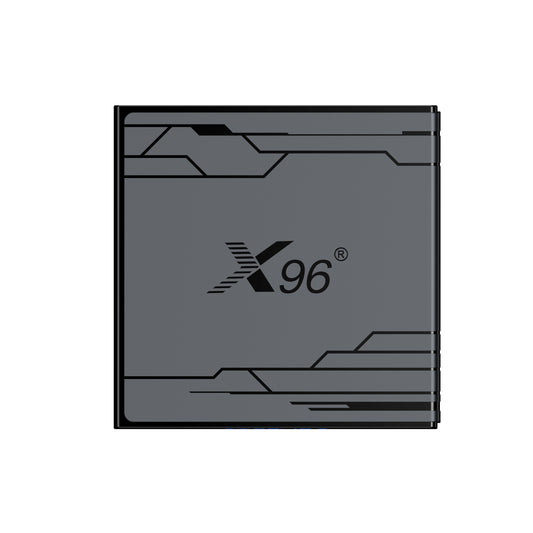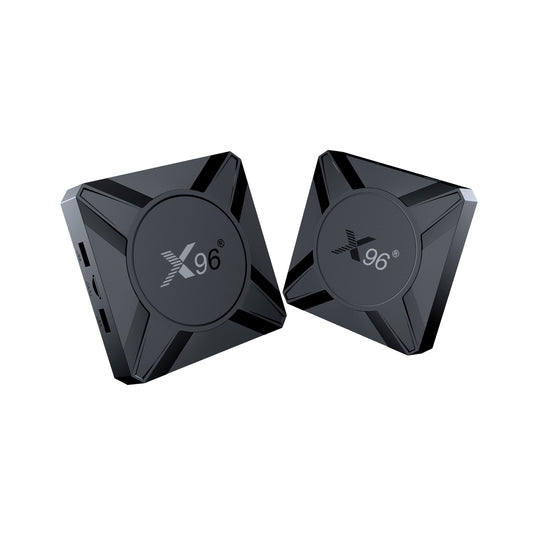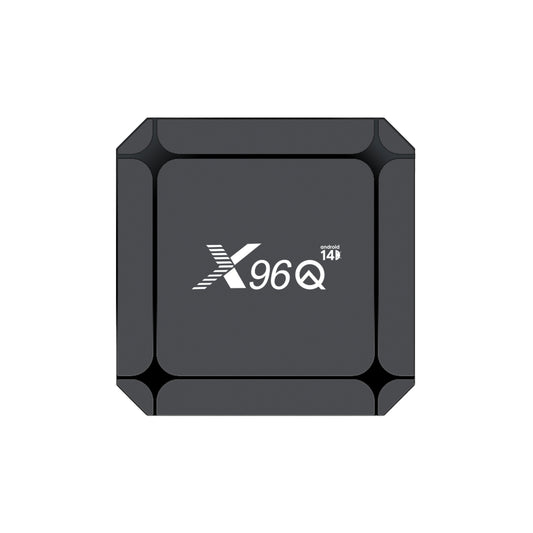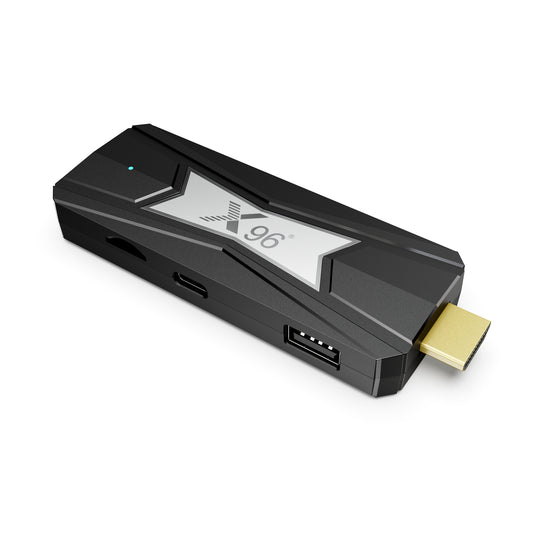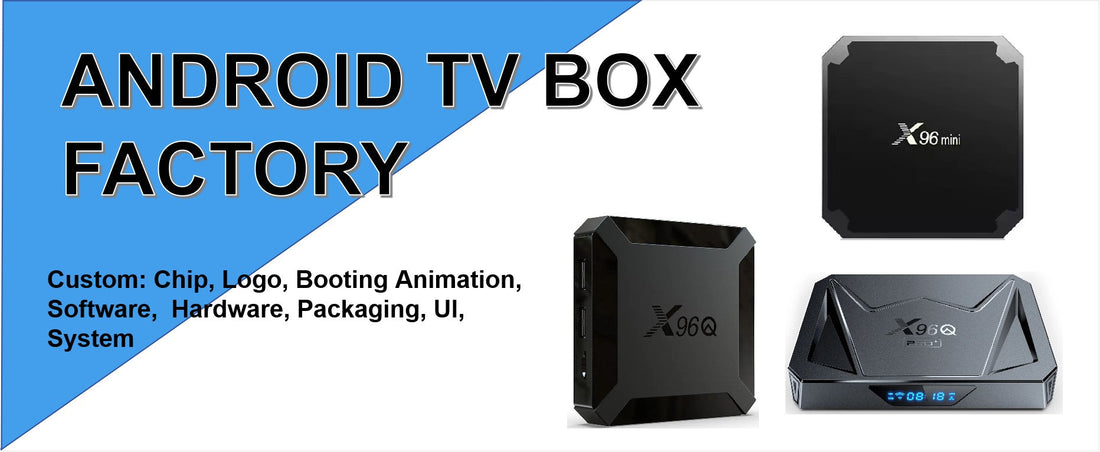
Android TV Box Best Dolby Atmos WiFi Router Smart Home Devices With Remote Control 4K 8K Android Set Top Box
The Android TV Box is a powerful addition to modern home entertainment systems, offering access to 4K and 8K content with stunning visuals and immersive Dolby Atmos audio. It serves as a versatile hub, allowing users to stream their favorite movies and shows while enjoying high-quality sound. With easy connectivity to WiFi and compatibility with smart home devices, the Android TV Box enhances the viewing experience and simplifies control through remote or voice commands. Its ability to transform any TV into a smart entertainment center makes it an essential device for tech-savvy households.
1. Android TV Box: Overview, Configurations, and Industry Applications
An Android TV Box is a compact streaming device that runs on the Android operating system, transforming any standard TV into a smart TV. It allows users to stream content from platforms like Netflix, YouTube, and Disney+, play games, browse the internet, and even run productivity apps.
These devices typically connect via HDMI and support Wi-Fi or Ethernet for internet access. Many models also include USB ports, Bluetooth, and expandable storage for enhanced functionality.
2. Key Hardware Configurations
| Component | Common Specifications |
| Processor (CPU) | Quad-core / Octa-core (e.g., Amlogic, Rockchip, Allwinner) |
| GPU | Mali, PowerVR, or Adreno (for smooth video playback & gaming) |
| RAM | 2GB – 8GB (higher RAM = better multitasking) |
| Storage | 8GB – 128GB (expandable via microSD/USB) |
| OS Version | Android 9 – Android 13 (varies by model) |
| Video Support | 4K UHD, HDR10, Dolby Vision |
| Audio Support | Dolby Atmos, DTS:X |
| Connectivity | Wi-Fi 5/6, Bluetooth 5.0, Ethernet, USB 2.0/3.0 |
| Ports | HDMI 2.0/2.1, USB, microSD, AV (for older TVs) |
3. Industry Applications
Android TV Boxes are used across multiple industries due to their versatility, affordability, and customization options.
A. Home Entertainment
- Streaming Services: Netflix, Prime Video, Disney+, Hulu
- Gaming: Supports cloud gaming (GeForce Now, Xbox Game Pass) and Android games
- Karaoke & Music: Apps like Spotify, YouTube Music, and dedicated karaoke software
B. Hospitality (Hotels & Restaurants)
- Digital Signage: Displays menus, promotions, and hotel info
- In-Room Entertainment: Guests can access streaming, local TV, and hotel services
C. Education & E-Learning
- Remote Learning: Supports Zoom, Google Classroom, and educational apps
- Interactive Lessons: Connects to projectors for digital whiteboarding
D. Business & Digital Signage
- Retail Stores: Displays ads, product demos, and promotions
- Corporate Meetings: Used for video conferencing (Zoom, Google Meet)
E. Healthcare
- Patient Entertainment: Provides relaxation content in hospitals
- Telemedicine: Supports video consultations via apps
F. Gaming & Retro Emulation
- Cloud Gaming: Xbox Cloud Gaming, NVIDIA GeForce Now
- Retro Gaming: Emulates classic consoles (PS1, NES, Sega)
4. Advantages Over Traditional Smart TVs
✔ Cost-Effective – Cheaper than buying a new smart TV
✔ Upgradable – Can be replaced easily when outdated
✔ Customizable – Supports sideloading apps (unlike locked-down smart TV OS)
✔ Portable – Easy to carry and use in different locations
5. Future Trends
- AI Integration (voice assistants, smart recommendations)
- 8K & AV1 Codec Support (for next-gen streaming)
- More Gaming-Centric Models (with better GPUs & controllers)
2. Android TV Box Dolby Atmos
1. What is Dolby Atmos?
Dolby Atmos is an immersive audio technology that creates a 3D sound experience, allowing sounds to move around the listener in a multi-dimensional space. Unlike traditional surround sound (5.1 or 7.1), Atmos adds height channels, making audio feel more realistic (e.g., rain falling from above or helicopters flying overhead).
2. Why Choose an Android TV Box with Dolby Atmos?
- Cinematic Experience: Perfect for movies, gaming, and music.
- Future-Proof Audio: Supports the latest streaming content (Netflix, Disney+, Apple TV+).
- Compatibility: Works with soundbars, AV receivers, and home theater systems that support Atmos.
3. Key Features to Look for in an Android TV Box with Dolby Atmos
| Feature | Why It Matters |
| Dolby Atmos Certification | Ensures proper decoding & playback. |
| HDMI 2.1 (eARC Support) | Needed for lossless Atmos (TrueHD) from Blu-ray rips. |
| 4K HDR (HDR10/Dolby Vision) | Enhances visuals alongside Atmos audio. |
| Powerful CPU/GPU | Smooth playback of high-bitrate Atmos content. |
| Wi-Fi 6 / Gigabit Ethernet | Reduces buffering for streaming Atmos. |
| USB 3.0 / Expandable Storage | Needed for local Atmos movie files. |
4. How to Enable Dolby Atmos on Android TV Box?
1. Check Device Compatibility (Settings > Sound > Dolby Atmos)
2. Use a Supported App (Netflix, Disney+, Plex, Kodi)
3. Connect to an Atmos-Capable Sound System (Soundbar/AV Receiver)
4. Enable HDMI eARC (if using TrueHD Atmos from local files)
5. Limitations & Workarounds
❌ No Atmos on Some Apps (YouTube doesn’t support Atmos)
➡ Fix: Use Plex/Kodi for local files.
❌ Compressed Atmos (DD+) on streaming apps (not lossless)
➡ Fix: Use Blu-ray rips with TrueHD Atmos.
❌ Some Cheap Boxes Fake Atmos Support
➡ Fix: Stick to certified devices (NVIDIA Shield, Fire TV Cube).
6. Conclusion
An Android TV Box with Dolby Atmos enhances movies, gaming, and music with 3D surround sound. For the best experience:
- Premium users: NVIDIA Shield TV Pro (TrueHD support)
- Streaming-focused: Xiaomi Mi Box S (budget Atmos)
- Local media lovers: Zidoo Z9X Pro (Blu-ray rips)
Want recommendations for your setup? Let me know your budget & usage!
3. Android TV Box WIFI Router
Android TV Box WiFi Router Performance & Configuration Guide
WiFi performance is crucial for smooth streaming, gaming, and app usage on an Android TV Box. This guide explains WiFi standards, router compatibility, and optimization tips for the best experience.
1. WiFi Standards & Their Impact on Android TV Boxes
| WiFi Standard | Max Speed | Frequency | Best For |
| WiFi 4 (802.11n) | 150-600 Mbps | 2.4 GHz | Basic streaming (SD/HD) |
| WiFi 5 (802.11ac) | 433 Mbps - 1.3 Gbps | 5 GHz | 4K streaming, low latency |
| WiFi 6 (802.11ax) | 600 Mbps - 9.6 Gbps | 2.4/5/6 GHz | Ultra HD, gaming, multiple devices |
| WiFi 6E | Up to 10 Gbps | 6 GHz | Future-proof, zero interference |
2. Key WiFi Features for Android TV Box Performance
A. Dual-Band vs. Tri-Band Routers
- Single-Band (2.4 GHz) – Slow, prone to interference (best for older boxes).
- Dual-Band (2.4 GHz + 5 GHz) – Faster speeds, less interference (recommended).
- Tri-Band (2.4 + 5 + 5/6 GHz) – Best for multiple 4K streams (high-end setups).
B. MU-MIMO & Beamforming
- MU-MIMO – Allows multiple devices to connect without slowdowns.
- Beamforming – Directs WiFi signal towards the Android TV Box for better stability.
C. QoS (Quality of Service)
- Prioritizes video streaming & gaming traffic over other devices.
- Essential for lag-free 4K HDR & Dolby Atmos streaming.
3. Optimizing WiFi for Android TV Boxes
A. Placement & Signal Strength
- Keep the router within 10-15 feet of the Android TV Box.
- Avoid thick walls, microwaves, and Bluetooth devices (interference).
- Use a WiFi analyzer app to find the least congested channel.
B. Firmware & Settings
- Update router firmware regularly.
- Enable 5GHz band (faster, less interference than 2.4GHz).
- Set QoS priority to the Android TV Box.
C. Alternative: Ethernet or Powerline Adapter
- For zero lag, use Gigabit Ethernet (if possible).
- If WiFi is weak, try Powerline adapters (AV1000 or better).
4. Troubleshooting WiFi Issues
❌ Buffering in 4K?
➡ Solution: Switch to 5GHz, reduce connected devices, or upgrade to WiFi 6.
❌ Weak Signal?
➡ Solution: Use a WiFi extender or mesh system.
❌ High Ping in Gaming?
➡ Solution: Enable QoS and connect via Ethernet if possible.
4. Android TV Box in Smart Home Devices
The integration of Android TV boxes into smart home ecosystems has revolutionized the way users interact with their home entertainment and automation systems. These versatile devices serve as a central hub, providing access to a wide range of applications and services that enhance the overall smart home experience. Here are some key applications of Android TV boxes within smart home devices:
1. Centralized Control Hub
Android TV boxes can act as a centralized control hub for various smart home devices. By connecting to compatible smart home ecosystems, users can manage lighting, security cameras, thermostats, and other IoT devices directly from their TV interface. This consolidation simplifies the user experience, allowing for seamless control from a single device.
2. Streaming and Entertainment
As entertainment devices, Android TV boxes enable users to stream content from popular services such as Netflix, Hulu, and YouTube. With the ability to install various streaming apps, users can access a vast library of movies, shows, and music. This makes Android TV boxes an essential component of any smart home entertainment system.
3. Voice Control Integration
Many Android TV boxes support voice control through virtual assistants like Google Assistant or Amazon Alexa. This integration allows users to control their smart home devices using voice commands, making it more convenient to adjust settings, play music, or search for content without needing a remote.
4. Smart Home Automation
Android TV boxes can be integrated into smart home automation routines. For example, users can set up scenarios where the TV automatically turns on, dims the lights, and plays a specific playlist when they arrive home. This level of automation enhances the convenience and comfort of smart living.
5. Gaming and Interactive Experiences
In addition to streaming, Android TV boxes support gaming applications, allowing users to play games on their TVs. This can be combined with smart home features, such as using motion sensors or smart lights to create immersive gaming experiences.
6. Security and Monitoring
Android TV boxes can be linked to security cameras and monitoring systems, enabling users to view live feeds or recorded footage directly on their TV screens. This integration enhances home security by allowing for easy monitoring of different areas within the home.
7. Customization and Personalization
With access to the Google Play Store, users can download a variety of apps to customize their smart home experience further. From home automation apps to lifestyle applications, the flexibility of Android TV boxes allows for a highly personalized setup tailored to individual preferences.
5. Android TV Box Remote Control
The remote control for an Android TV box is a vital accessory that enhances the user experience by providing convenient navigation and control over the device. Here’s a detailed overview of the features, types, and usage of Android TV box remote controls:
1. Key Features of Android TV Box Remote Controls
- Navigation Buttons: Most remotes come equipped with directional buttons (up, down, left, right) that allow users to navigate through menus, apps, and settings easily.
- Home Button: This button takes users directly to the home screen, providing quick access to installed applications and settings.
- Playback Controls: Many remotes include dedicated buttons for play, pause, rewind, and fast forward, making it easy to control video playback.
- Volume Control: Some remotes feature volume control buttons, allowing users to adjust the sound without needing to use the TV remote.
- Search Functionality: A dedicated search button can facilitate quick searches for content across various apps and services.
- Voice Control: Many modern Android TV box remotes come with built-in microphones that enable voice search and commands, allowing for hands-free operation.
- Shortcut Buttons: Some remotes include customizable shortcut buttons for frequently used apps or functions, enhancing convenience.
2. Types of Android TV Box Remote Controls
- Standard Remote Controls: These are basic remotes that come with most Android TV boxes, featuring essential navigation and control buttons.
- Air Mouse Remotes: These remotes use motion-sensing technology, allowing users to point and click on the screen like a mouse. They often include a keyboard on the reverse side for easier text input.
- Backlit Remotes: Ideal for low-light environments, these remotes feature illuminated buttons, making it easier to navigate in dark rooms.
- Universal Remotes: Some users prefer universal remotes that can control multiple devices, including the Android TV box, TV, and other home entertainment components
- Mobile App Remote Controls: Many Android TV boxes allow users to control their device using a mobile app available on smartphones. This can provide additional features, such as a virtual keyboard and voice input.
3. Using the Android TV Box Remote Control
- Setup: Most remotes are plug-and-play, requiring no additional setup. Simply insert the batteries (if applicable), and the remote should automatically pair with the Android TV box.
- Navigation: Use the directional buttons to move through menus and select apps. The home button will always take you back to the main screen.
- Voice Commands: If your remote has a microphone, press the voice control button and speak your command. This can be used to search for shows, launch apps, or control smart home devices
- Text Input: For apps requiring text input, you can use the on-screen keyboard. If using an air mouse remote, you can also navigate to text fields more easily.
4. Troubleshooting Common Remote Issues
- Unresponsive Remote: If the remote is not working, check the batteries and replace them if necessary. Ensure that there are no obstructions between the remote and the Android TV box.
- Pairing Issues: If the remote is not pairing with the device, try resetting the remote (if applicable) and following the pairing instructions provided in the user manual.
- Interference: Ensure there are no electronic devices nearby that could cause interference with the remote's signal.
6. 4K 8K Android Set Top Box
The evolution of video resolution has brought about significant advancements in home entertainment, with 4K and 8K Android set-top boxes leading the way. These devices offer enhanced picture quality, immersive viewing experiences, and advanced features. Here’s a detailed look at the configurations and benefits of 4K and 8K Android set-top boxes.
1. Understanding 4K and 8K Resolutions
- 4K Resolution: Also known as Ultra High Definition (UHD), 4K resolution has a pixel count of 3840 x 2160, which is four times the resolution of Full HD (1920 x 1080). This increased pixel density results in sharper images, more detail, and improved color accuracy.
- 8K Resolution: 8K resolution takes it a step further, offering a pixel count of 7680 x 4320, which is four times the resolution of 4K. This means that 8K provides an astonishing sixteen times the resolution of Full HD. While 8K content is still limited, the technology allows for future-proofing and an even more immersive viewing experience.
2. Key Configurations of 4K and 8K Android Set-Top Boxes
- Processor: High-performance processors are essential for handling the demands of 4K and 8K video playback. Look for set-top boxes equipped with quad-core or octa-core processors, such as the Amlogic S922X or similar, which can efficiently decode high-resolution video formats.
- Memory and Storage: Sufficient RAM (at least 2GB for 4K and 4GB or more for 8K) ensures smooth multitasking and quick app launches. Additionally, internal storage (16GB or more) is important for installing apps and storing content, with some devices offering expandable storage options via microSD cards.
- Graphics Processing Unit (GPU): A powerful GPU is crucial for rendering high-resolution graphics and ensuring fluid motion in videos and games. Look for devices with GPUs capable of supporting HDR (High Dynamic Range) and advanced video codecs
- Video Codec Support: Support for various video codecs is essential for optimal playback. Look for support for HEVC (H.265), VP9, and AV1, which are commonly used for streaming 4K and 8K content.
- HDMI Output: Ensure the set-top box has HDMI 2.0 or HDMI 2.1 output to support 4K and 8K resolutions at the appropriate refresh rates. HDMI 2.1 is particularly important for 8K devices, as it allows for higher bandwidth and features like Variable Refresh Rate (VRR).
- Connectivity Options: Fast and reliable connectivity is crucial for streaming high-resolution content. Look for devices with dual-band Wi-Fi (2.4GHz and 5GHz) and Ethernet ports for stable internet connections. Some devices may also offer Bluetooth for connecting peripherals.
- Audio Support: In addition to video quality, audio support is essential for an immersive experience. Look for support for Dolby Atmos, DTS:X, and other advanced audio formats to enhance sound quality when watching movies or playing games.
3. Benefits of 4K and 8K Android Set-Top Boxes
- Enhanced Picture Quality: Both 4K and 8K set-top boxes provide stunning visuals with incredible detail and vibrant colors, making them ideal for large-screen TVs.
- Future-Proofing: Investing in an 8K set-top box can future-proof your home entertainment system as more 8K content becomes available in the coming years.
- Streaming Services: Many streaming platforms, such as Netflix, Amazon Prime Video, and YouTube, offer 4K and, increasingly, 8K content. Android set-top boxes provide access to these services, allowing users to enjoy high-resolution content.
- Gaming Capabilities: For gaming enthusiasts, 4K and 8K set-top boxes can deliver an enhanced gaming experience with improved graphics and performance, especially with compatible games.
7. Conclusion
In modern home entertainment systems, the integration of an Android TV Box, the best Dolby Atmos audio experience, a high-performance WiFi router, and smart home devices can significantly enhance both viewing and gaming experiences. 4K and 8K Android set-top boxes not only provide ultra-high-definition video quality but also support advanced audio technologies like Dolby Atmos, delivering an immersive sound experience. Choosing a high-performance WiFi router ensures smooth streaming of high-definition videos, minimizing buffering and latency while supporting multiple device connections.
Additionally, the integration of smart home devices allows users to easily control their entertainment system through a remote or voice assistant, providing a more convenient and intelligent lifestyle. Overall, combining these high-tech devices enables users to create a fully upgraded home entertainment center, enjoying the ultimate audio-visual feast.

